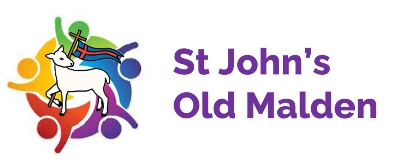Great Mullein, sometimes known as Aaron's Rod

Rescued from a development site 500 metres along the road, 18 of these wild plants have been relocated alongside Church Path.
Two metre high Great Mulleins are planted as the backbone of many prestigious Gravel Gardens (like the one on the approach to Charterhouse School’s Estate Office (photo below). These follow the insights of the great gardener, Beth Chatto. She realised that plants should be planted in the conditions that suit them. When this happens, they need little watering or fertiliser to grow ‘like weeds’.
‘Add Nothing’ the first rule of conservation applies in our scientifically surveyed and approved Churchyard. But in Church Path, conservation is whatever is ‘in keeping’ with it being a village lane. Digging, however is ruled out. Underneath the hard gravel is the ancient Sign Hill (the Mael Dune that became Malden). Archaeologically, the Path is the significant high-way to which this Sign pointed. Only by removing troublesomely invasive Brambles and Sycamore trees is this Path kept open. Their roots (and earthworms) have pioneered pockets of soil. If we do not choose what grows in that soil, nature will.

The rich tapestry of wildflowers that once filled every country lane has disappeared. Hardly anyone knows one wildflower by name nowadays. Even dictionaries are removing their names. Wildflowers are out of sight, out of our minds. Soon they will be out of existence. Life on earth depends on plants. Their extinction would mean our extinction. So a collection of wildflowers and cottage garden plants has been begun here, little by little to turn the tide of extinction.

Root by root, Primroses, Cowslips, Wood Anemones, Native Bluebells and many more wildflowers have been planted or are waiting in pots for the right weather to do it. Cottage garden favourites are not excluded. With every new plant, the tide of extinction goes back another millimetre.
Great Mulleins have the first QR link to our Conservation website. If QR squares link many of these with our website, children will know all their names much faster than we can devise their codes. Adult visitors, phone in hand, will be inside the Churchyard asking “Where are the 75 species recorded here in 2003 ?”
Great Mullein (Verbascum Thapsus)
